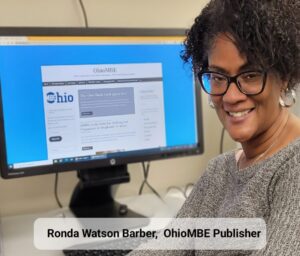By Ronda Watson Barber
OhioMBE Publisher
Columbus City Schools recently reported that 17.9% of its controllable spending for FY25 went to Local Economically Disadvantaged Enterprises (LEDEs). The district calls that progress. I call it a claim in need of proof.
Numbers alone don’t tell the story. Behind that 17.9% are unanswered questions about how the district supposedly achieved those results — and whether real outreach ever took place.
I’ve sent formal questions to the Superintendent and every member of the elected Board of Education. Not one has provided the professional courtesy of a written response. Instead, I was invited to meet with the Chief Operating Officer and the Outreach Coordinator — two individuals who have already failed to provide transparency or leadership in this area. I respectfully declined.
After years of meetings and unfulfilled promises, I’m not interested in more conversation. I’m interested in answers.
What Outreach Efforts Were Made?
What specific outreach efforts were conducted to achieve the reported numbers in the FY25 LEDE Spend Report?
The district has not provided documentation of any vendor engagement, outreach meetings, or public notifications. If outreach did occur, who organized it, when did it happen, and where is the documentation?
The summer Capital Improvements report showed $80.9 million in total spending, but only $4.6 million went to African-American firms, compared to $17.9 million to Caucasian firms. Those numbers tell a story of exclusion, not outreach.
So I ask again: What good faith efforts were made?
Did the district host prebid meetings, workshops, or vendor fairs? Were minority contractors personally notified of opportunities or invited to participate?
If so, where is the evidence?
How Were Black and LEDE Vendors Engaged?
How did the district reach Black-owned and LEDE-certified businesses to alert them of upcoming projects?
With the Outreach Office dormant since March 2024 and the LEDE vendor list still inaccessible to the public, how could the district claim to have meaningfully engaged diverse firms?
Without proactive outreach or transparency, the claim of progress rings hollow.
Where Were the Prebid Notifications?
How were vendors notified of prebid meetings or contracting opportunities? Were those notices posted publicly or quietly circulated among preferred contractors?
If prime contractors were expected to meet good-faith LEDE participation goals, how did they identify LEDE vendors when the district’s own vendor list was unavailable?
Transparency is not optional — it’s required. Yet there is no trace of consistent communication, event announcements, or access to verified vendor data.
Silence Is Not Transparency
When taxpayers and small business owners ask legitimate questions, public officials owe them professional, written answers. Silence is not transparency — it’s avoidance.
Until Columbus City Schools can demonstrate genuine outreach, documentable good-faith efforts, and accountability in contracting, the credibility of its LEDE program remains in question.
This isn’t just about percentages. It’s about trust, fairness, and inclusion — and right now, the district is failing on all three.
just my thoughts…rwb
Discover more from OhioMBE
Subscribe to get the latest posts sent to your email.
